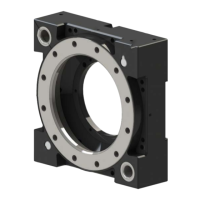Manual, Control and Signal Module, SA2 SA3
Document #9620-20-C-SA2 SA3-04
Pinnacle Park • 1031 Goodworth Drive • Apex, NC 27539 • Tel: 919.772.0115 • Fax: 919.772.8259 • www.ati-ia.com • Email: info@ati-ia.com
C-2
C. Control and Signal Modules
SA2—Control Module
SA3—Control Module (Potted version)
1. Product Overview
The control modules are required to provide a means for the customer to communicate with and control the Tool
Changer.
MS-style connectors allow interfacing on the Master and Tool modules. When the Tool Changer is coupled, the
Master and Tool modules communicate across their interface using a spring-loaded pin block. A exible boot
surrounds the pin block to seal the connection. This seal is water resistant but not waterproof. Several module
congurations are available to provide the customer with Tool Changer I/O and various pass-through signal
capabilities. Refer to Section7—Specications for the details of each available module.
The Tool-ID feature allows the customer to distinguish between the different tools being coupled by the Tool
Changer. The customer may set the Tool-ID by using push button switches on the Tool modules. Refer to
Section2.5—SettingtheTool-IDontheSA3,SA4,SA5,andSA7ToolModule.
The SA2 and SA3 Master modules are compatible with air adapter modules. The customer must supply the air
adapter with both a Lock and Unlock air supply. The Lock and Unlock air supply must be connected to a 2-position
4-way or 5-way valve, refer to the air adapter or Tool Changer manual for detailed information.
DANGER: This module has a voltage of 50 V or greater; NO contact should be attempted
before removing power. This especially includes separation or insertion of the mating
connectors or any contact with the Tool Changer, Utility Coupler, or its components. Arcing
and damage will occur if this is not observed. Remove power before attaching, disconnecting
any cables or attempting any maintenance of Tool Changer or Utility Coupler.
CAUTION: Never couple or uncouple the unit without rst disconnecting and discharging
the power that passes through the contacts. This is especially true if high voltage circuits are
involved. Arcing and contact damage will occur if this is not observed. Always disconnect and
discharge electrical power from both upstream and downstream modules.

